What is BARF?
BARF - "Biologically Appropriate Raw Food" is an abbreviation of "biologically appropriate raw food or bones and raw food products". The philosophy and composition of BARF food is very simple - it is a balanced food consisting of raw meat, offal and bones. It can be topped with vegetables, yogurt or eggs. It is a food that satisfies the eating habits of our domestic animals, which have been formed by living in the wild for millions of years. The wolf hunts small animals in the forest, which can be caught by eating them all, leaving only the skull and neck vertebrae of larger animals. Dogs have changed a lot in terms of behavior and appearance from wolves as a result of breeding, but their nutritional needs have not changed at all. Despite the external breed differences, the ancestors of all dogs and cats are wild animals, with which they share a common genetic code.
Your dog is a carnivore. 5 things that prove it
- Dog saliva does not contain amylase. The lack of amylase causes the pancreas to overload, as it is forced to take full responsibility for digesting carbohydrates.
- Short and simple digestive tract. Thanks to the high PH level of the stomach, proteins and animal fats are easily and quickly digested in the small intestinal tract.
- Structure of teeth and jaw. Wide mouth opening suitable for swallowing large pieces of meat. Short and sharp teeth for tearing meat.
- Gluconeogenesis. Dogs use protein and fat instead of carbohydrates as their primary energy source.
- Insulin response. Carbohydrate-rich foods cause a strong insulin response, which results in the release of more glucose, which is stored as body fat. This can contribute to obesity and diabetes.

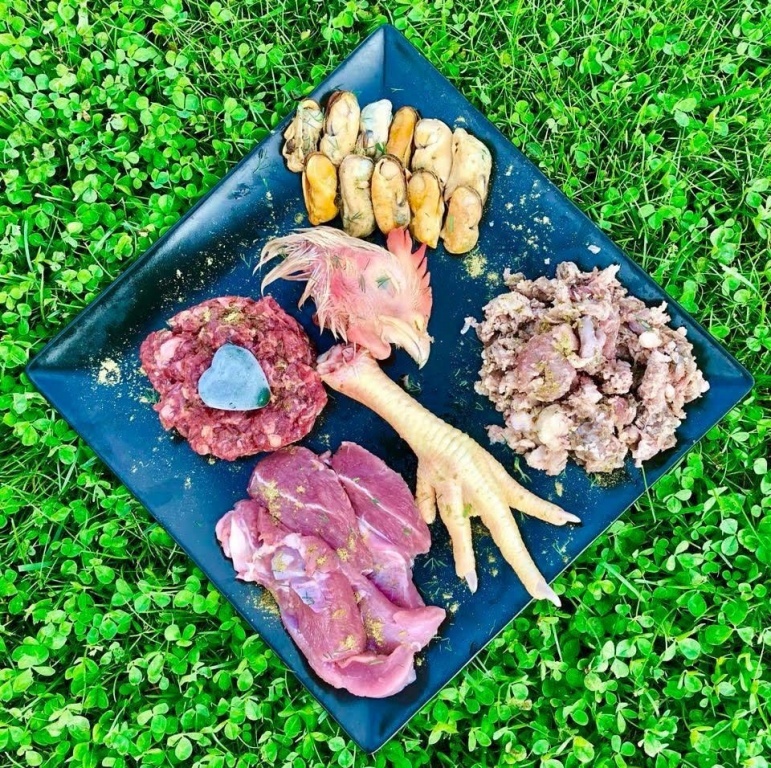
Refreshment includes everything natural and necessary for the dog in the necessary proportions - 80% muscle meat, 10% edible bones, 5% liver, 5% other organs (kidney, testicles, brain, spleen), you can also add up to 10% vegetables, but vegetables are recommended blender, because otherwise they are very poorly processed in the dog's body and he does not receive valuable nutrients and vitamins. It is important to remember that carnivores do not have all the necessary processing mechanisms to break down and digest plant products as humans do. Dogs do not have the teeth, jaw structure and salivary enzymes to start this digestion process in the mouth, so this food is prepared beforehand.
Cats
Cats are a little different than dogs. Cats do not need vegetables at all, their menu consists of 84% muscle meat, 6% edible bones, 5% liver, 5% other organs (exactly the same as dogs). The recommended daily dose for cats is 3% of their weight, for more active cats you can increase the dose to 4%, and for sluggish sleepers reduce it to 2%.

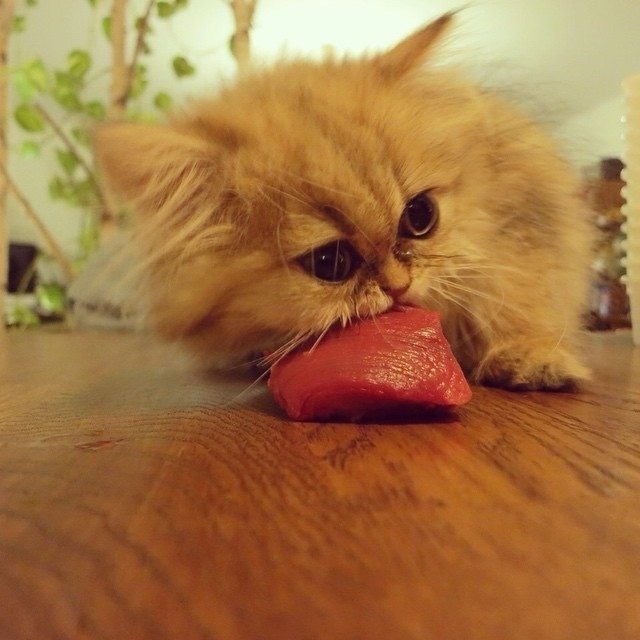
Taurine for cats
Cats cannot make their own taurine from other amino acid building blocks, so it is important to ensure that the diet provides enough taurine. Cats are unable to synthesize taurine themselves because their minimal enzyme activity is cysteine dioxygenase and cysteine sulfinic acid decarboxylase. Cats must obtain their taurine requirements from the muscle tissue of their prey. Taurine is an essential amino acid needed to maintain proper eye and heart function; but it is also important for fetal development, growth, reproduction, neuromodulation, vision, hearing, blood platelet formation, immune response, antioxidation, and the production of fungi.
Muscle meat contains quite a lot of taurine. The amount of taurine in meat depends on how much the muscles work. Darker meat indicates hard-working muscles, thus increasing taurine levels. The heart, which is the hardest working muscle in the body, contains the highest amount of taurine.
Larger animals such as cattle have lower concentrations of taurine. Smaller animals have much higher concentrations of taurine. Taurine is abundant in most fish, birds and rodents.
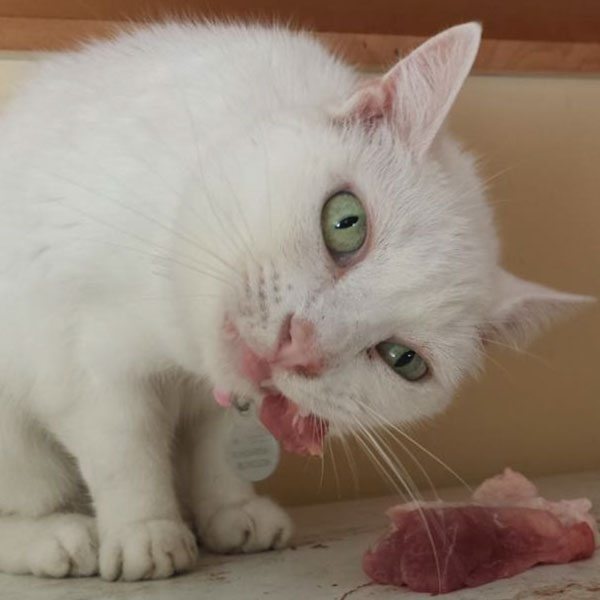
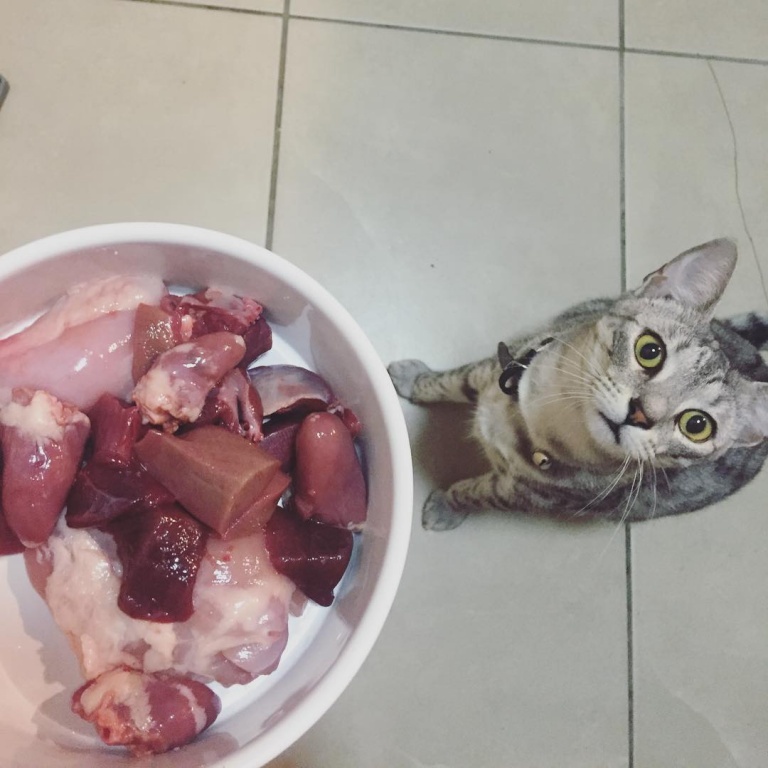
What can be given?
All kinds of meat that is available. (of course, if the dog or cat is not allergic to any type of meat). The most available protein sources – chicken, turkey, duck, goose, beef, pig, lamb, rabbit, quail. If forest meat is available, then it can also be safely given, but it is preferable to freeze it for 2-3 weeks beforehand, so that if there are any parasites, they do not survive. Fish is a valuable source of omega 3 and protein. The most valuable fish are salmon, herring, mackerel, sardines. Larger dogs can safely be given a whole salmon head to gnaw. Give 1/3 of the mackerel to the smaller ones. Remember that a dog and a cat should be provided with at least 4 different animal meats, as the amount of nutrients in each meat is different, so provide as much variety as possible.
Bones
Edible bones are - wings, legs, ribs, backs, tails, necks, heads. Beef trachea is also a good stomach tonic for those who are afraid to give bones.
Bones should ONLY be given FRESH.
For cats and small dogs
- Whole quail
- Chicken wing
- Duck leg
- Chicken neck
For medium dogs
- Chicken backs
- Duck neck
- Chicken quarters
- Pig tails
- Duck wing
For large dogs
- A healthy rabbit
- Turkey neck
- Lamb's head
- Pig's leg
- Turkey leg

Dangerous bones
Boiled, smoked and dehydrated bones are dangerous. These bones are dry and brittle. This is because overcooking changes the structure of the bones and removes all moisture. These bones should never be fed.
Why should bones be given? Dry food contains substances that regulate the dog's excrement, but with natural feeding you do it yourself. Basically, poop is what you look at to see if everything is okay. Bones are the only thing that makes a dog's stomach hard. It also provides the body with the necessary dose of calcium and phosphorus.
Organs and offal
Organs contain the most vitamins of all meat products. Liver contains a lot of vitamin A, so an overdose of liver is not desirable and can cause diarrhea in the dog. Organs contain B vitamins (B1, B2, B6, folic acid, & B12) as well as vitamin D. Organic meats are also exposed to minerals such as phosphorus, iron, copper, magnesium and iodine, and they provide important fat-soluble vitamins A, D, E and K. It should be remembered that heart, lungs, stomach belong to muscle meat, but they should not be given more for 15% of the daily dose.
Liver
Fresh liver is able to provide the body with the necessary amount of vitamins and minerals for the daily norm. Therefore, liver is especially recommended for pregnant bitches and puppies.
The liver produces a special substance - heparin, which is used in medicine to normalize blood clotting. They are also recommended for use in cases of cardiovascular and nerve diseases, if there are problems with blood vessels. The liver contains chromium, which helps with atherosclerosis and diabetes. The most characteristic feature of the liver is that it contains iron-containing proteins. Chief among them is ferritin, which contains more than 20 percent iron. It also contains phosphorus, potassium, sodium, calcium, magnesium and copper.
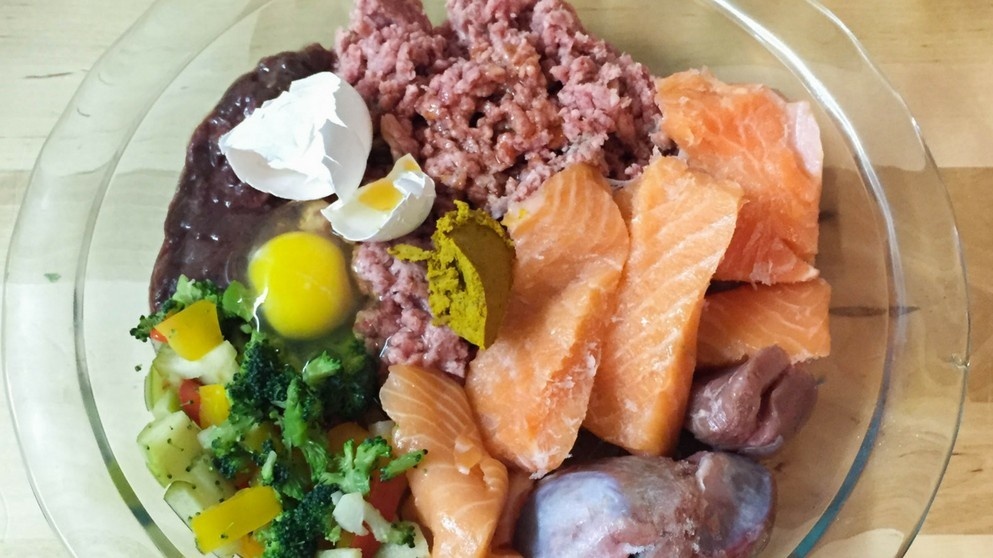
Beef stomach
Stomach is a by-product that is recommended to be given in bulk to your dog, about 15-20% of the total meat ration. Sick dogs or dogs with digestive problems can even be given more. It contains the perfect calcium: phosphorus ratio, fat, vitamins, trace elements, *good bacteria* and is ideal for teeth. There is a lot of protein in the stomach. 70% of this protein contains 7 amino acids, which perform the most important functions in your dog's body, including muscle formation and improving the functioning of all body systems, both the immune system and tissue regeneration, up to the urinary output system.
Enzymes
Only a fresh stomach contains natural digestive enzymes. Natural enzymes support the digestive process by improving the breakdown of nutrients. The more digestive enzymes available, the more vitamins, minerals and usable energy your pet will be able to get from the food.
The stomach contains nutrients that may not be as readily available to your dog from other sources. For example, if your dog eats grass. Herbivores like cows and sheep have different digestive enzymes in their bodies to digest the food they normally eat. A dog, primarily a carnivore, has a variety of digestive enzymes to digest raw meat products, similar to wild animals. By including ruminants in your dog's food, you give them more usable nutrients.
Minerals
The stomach has an excellent ratio of calcium to phosphorus, as well as an optimal ratio of Omega 3 to Omega 6 fatty acids, making their diet balanced. Stomach meat also has an acidic pH, making it easier for your dog to digest food - especially recommended for dogs with sensitive stomachs and frequent gassiness.
The stomach is high in heart-healthy unsaturated fatty acids, making up almost 50% of total fatty acids. These fatty acids provide high-quality, long-lasting energy and increase HDL (high-density lipoprotein) cholesterol, which is essential for health.

How much to give?
An adult dog should be given 2-4% of his weight depending on physical activity. Puppies are a little different.
- 2-4 months old 8-10% of weight (3 meals)
- 4-6 months old 6-8% of weight (3 meals)
- 6-8 months old 4-6% of weight (2 meals)
- 8-12 months old 3-4% of weight (2 meals)
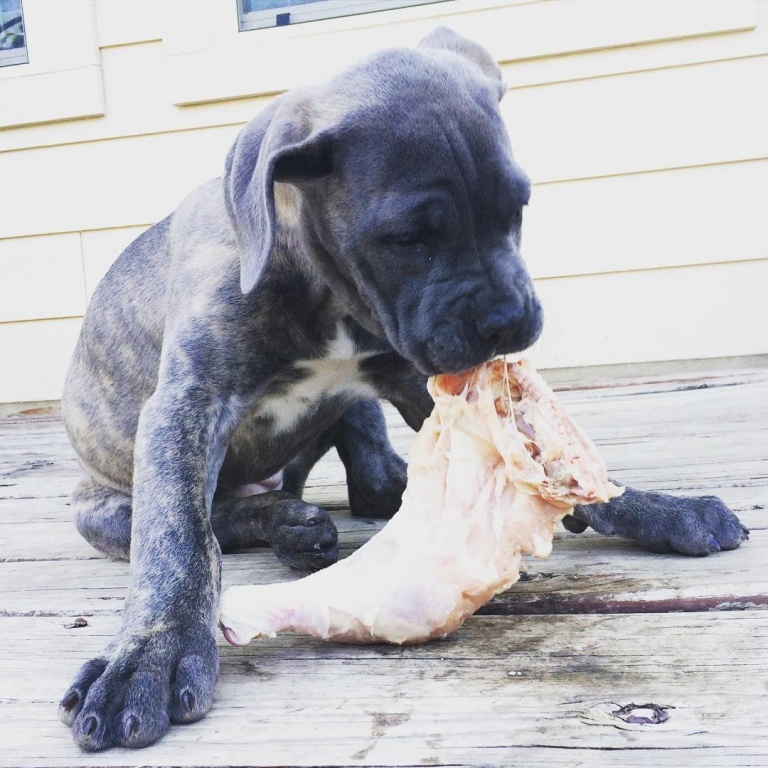
Demolition, demolition.
Since we have established that the dog is a carnivore and a predator, it is clear that gnawing bones and tearing flesh brings him pleasure and joy. Unfortunately, when eating dry food, the dog does not bite the grains, but only swallows them. A dog can swallow large pieces. There is no need to worry about your dog swallowing a large piece, so there is no point in cutting the meat into small pieces, the dog will just suck it in. Therefore, it is very important to choose the right size bones for your dog so that the dog does not choke. If you want to teach the dog to eat more slowly and not to swallow everything down, then give large pieces (bigger than his head) and frozen ones, he will have to gnaw them. You can also make it so that it is not necessary for the dog to gnaw the whole bone at once, for example, you can give a whole turkey neck and when half is gnawed, then you can exchange it for a treat or a small piece of meat. It is important to exchange so that the dog does not start guarding his food if you always take it away from him.
Transition from dry food to fresh food.
The most correct option is to move very slowly and leisurely. At first, add one tablespoon of meat to the dry food so that the dog gets used to the new taste and smell. Some dogs immediately jump on the meat, others cautiously taste it. Then you can slowly increase the amount of meat and decrease the amount of dry food every day. You should observe the dog's bowel movement, if everything is in order, then continue! But there is no need to panic if the dog has diarrhea, it belongs to the case, because big changes are taking place in the dog's body.
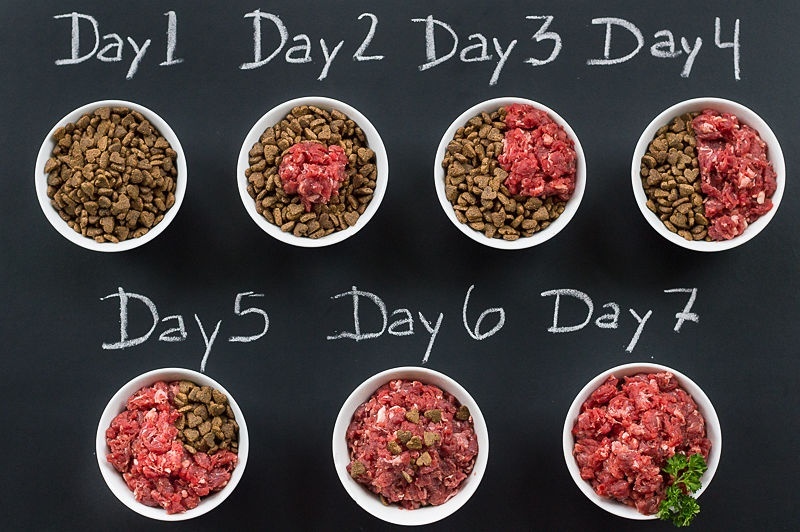
Additional products
- Farm eggs, quail eggs, can be safely given with the whole shell. The majority of fats are unsaturated fatty acids, including omega 3 and omega 6 fatty acids. Eggs contain essential nutrients such as zinc, selenium, retinol and tocopherols. The shell is an excellent source of calcium. The main thing is to give farm eggs, because they are more valuable than store-bought eggs and have not been treated with chemicals.
- Chia seeds. Source of Omega 3 and fiber.
- Spirulina - the world's most valuable food additive! The main component of spirulina is high-quality protein, but it also contains many other important vitamins and minerals in a concentrated form, such as B groups, C, D, A and E, potassium, calcium, copper, iron, magnesium, manganese, phosphorus, selenium, sodium , zinc and c.
- Coconut oil. Coconuts contain chain triglycerides, which are metabolized differently than other triglycerides. This fat is used as an energy source, which is delivered directly to the liver instead of being stored as fat. Therefore, the MCTs in coconuts can help boost your dog's metabolism, leading to weight loss and weight management. Coconut is also known for its detoxifying effects on the body. We recommend starting with a small dose, which can be increased later.
- Salmon oil is rich in proteins, vitamins and Omega 3, which build and maintain healthy joints, stimulate the growth of bone structure and help ensure a beautiful, shiny coat. The heart and blood vessels also benefit from polyunsaturated fatty acids.
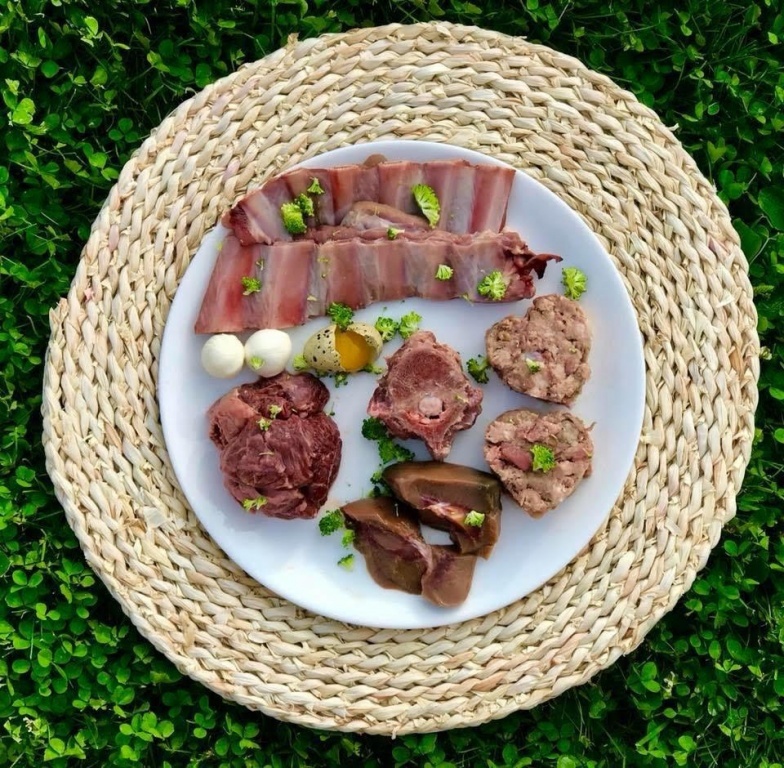
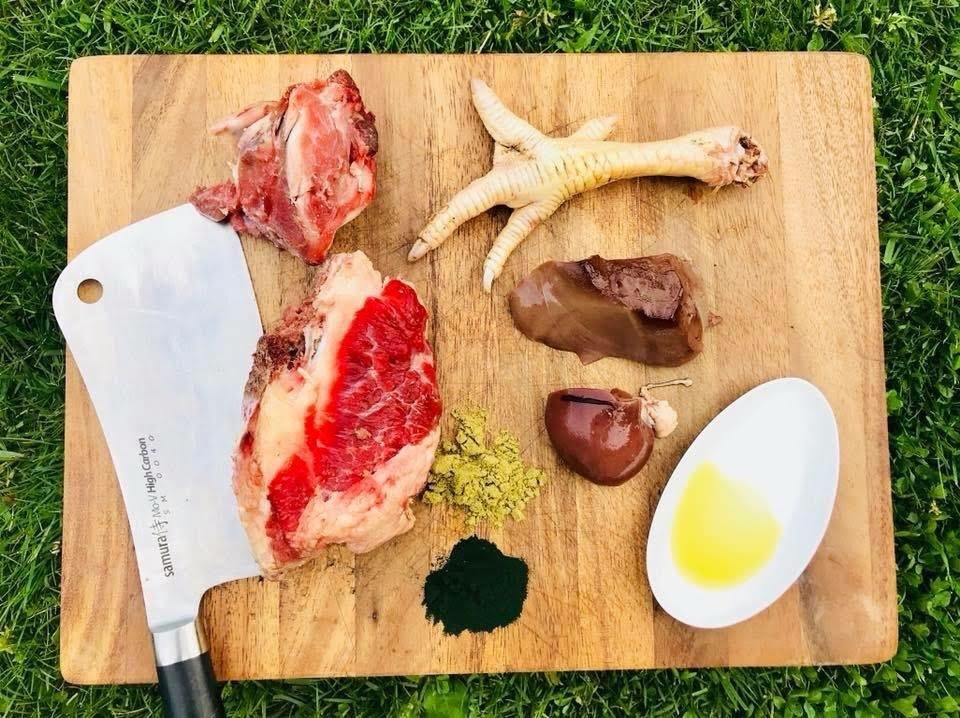
This all seems very complicated, doesn't it? But don't worry, we have made life easier for you and have created ready-made fresh dog food with already balanced content.
+ natural vitamins enable the dog to look better by maintaining a good body condition
+ more beautiful, softer, shinier coat
+ less dog scent
+ clean, white teeth, fresh breath
+ dogs are more emotionally stable, more obedient, easier to train
+ reduces the risk of diseases, especially allergies, digestive problems, diabetes, cancer and others


Believe us, your dog and cat will thank you for your choice!
Text author: Robina Liba Dravniece
Used literature:
https://www.dogsnaturallymagazine.com/why-organ-meat-is-important-for-the-raw-fed-dog/
http://www.rawmeatybones.com/petowners.php
Raw and natural nutrition for Dogs, Lew Olson, PhD
Seminar "Natural food for carnivores" Lecturers: Ilze Pētersone Mag.Vet.Med., LFHom (Vet) and Anete Freiberga, certified veterinarian.
